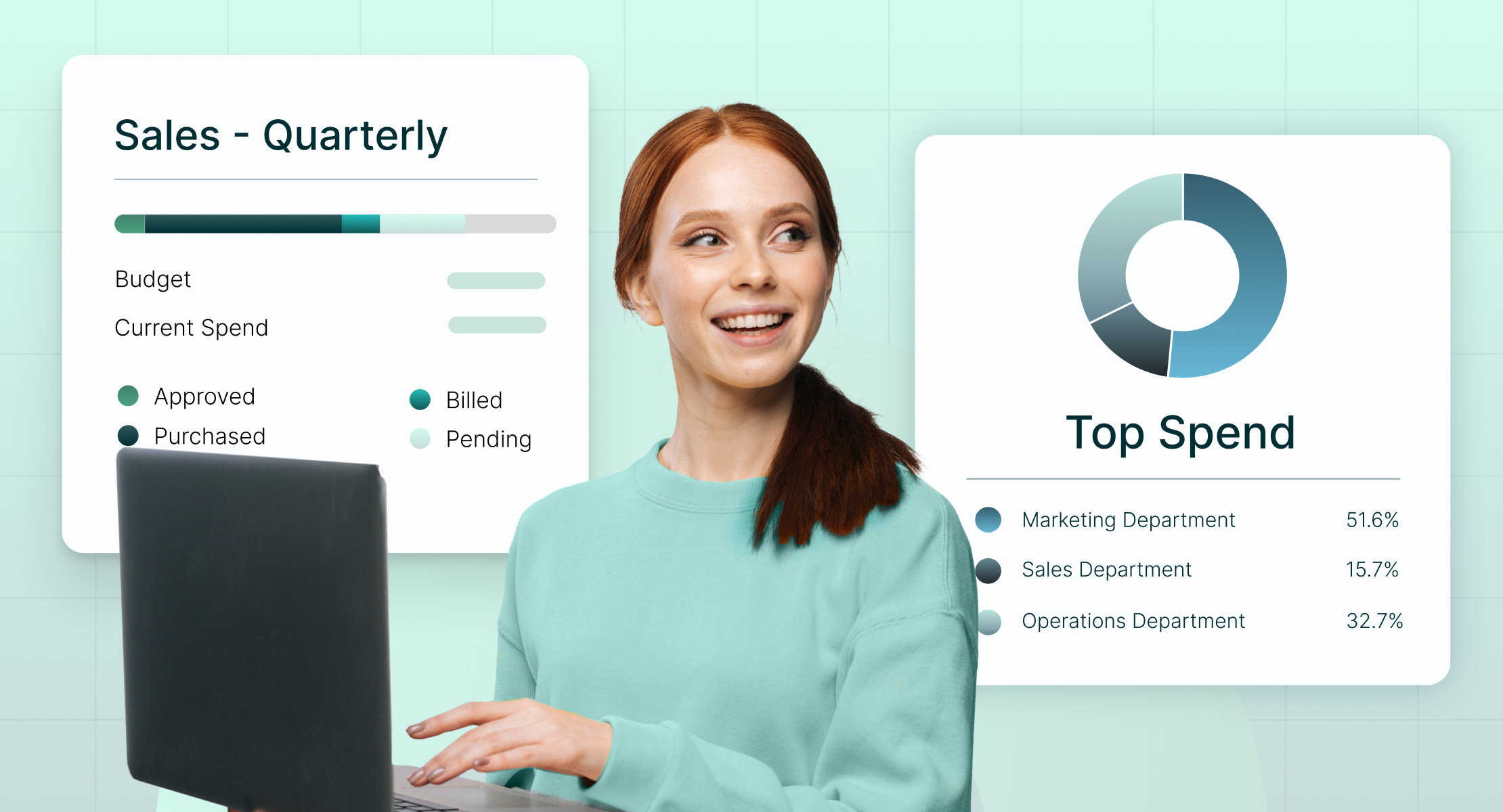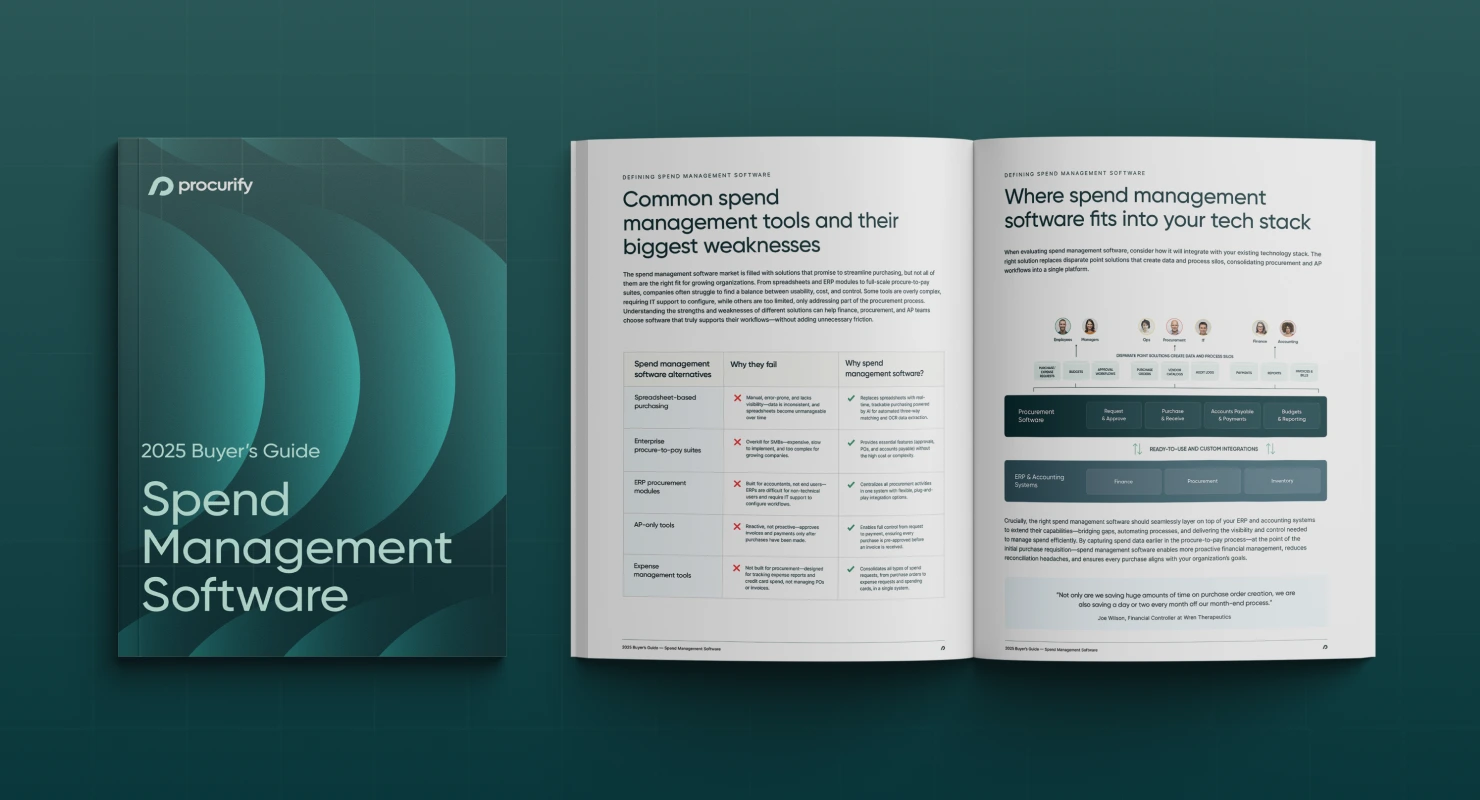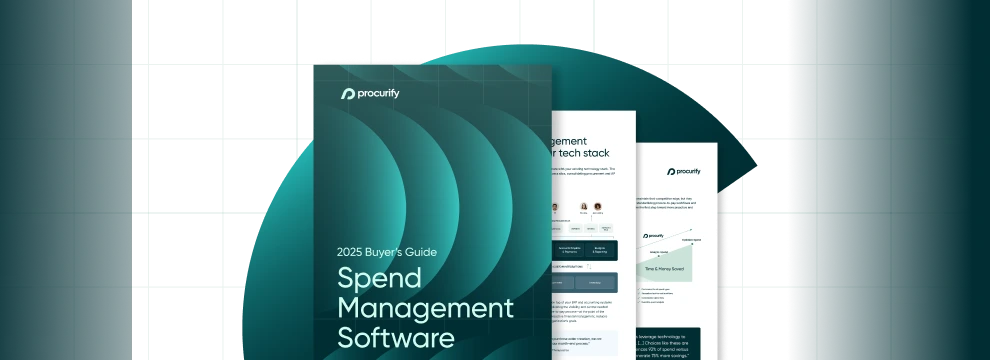
Still Guessing at Spend? Here’s What Procurement Analytics Can Do
Want to know exactly where your money is going? Analytics helps organizations gain spend visibility, build better relationships with suppliers, and find ways to save. By using insights from data, finance and procurement departments can make faster, more informed decisions, leading to more efficient processes and smarter planning.
In this guide, we’ll break down what procurement analytics is, why it matters, how to build a successful strategy, and how different industries are putting it into action.
What is procurement analytics?
Think of procurement analytics as a practical tool for making better spending decisions. It’s all about collecting, analyzing, and interpreting data to make smarter choices, reduce costs, and improve supplier relationships. Whether it’s tracking spending patterns or evaluating supplier performance, procurement analytics gives you the insights you need to build a more efficient strategy.
Four types of procurement analytics and how they work
Understanding the different types of analytics is key to building a smarter, more strategic procurement process. Each type serves a specific purpose—from spotting inefficiencies to guiding high-stakes decisions.
It starts with descriptive analytics, which helps you understand what’s already happened. Summarizing historical data, such as spend by category or supplier delivery performance, gives you a baseline for identifying trends and setting benchmarks.
Next is diagnostic analytics, which explores the why behind the numbers. For example, if supplier costs have risen or cycle times are lagging, this approach helps pinpoint the root cause—whether it’s late deliveries, invoice errors, or changes in payment terms.
Predictive analytics looks to the future. It uses historical trends to forecast demand, anticipate supply chain disruptions, or flag potential budget overruns—so teams can adjust strategies before problems arise.
Finally, prescriptive analytics turns insights into action. It uses algorithms and models to suggest what to do next, like adjusting order quantities, shifting to a more cost-effective supplier, or contract management and renegotiation. This is where teams move from informed to proactive.
Laying the foundation for effective procurement analytics
The best strategies start with high-quality data. That means pulling information from core sources—like invoices, purchase orders, and supplier records—and ensuring it’s clean, consistent, and standardized. If you don’t start with good data, the further you go downstream, the more impact you lose.
Once your data is in shape, it’s all about choosing the right platform. Look for tools that connect easily with your existing ERP or finance systems. A good procurement platform will make it easy to centralize data, generate reports, and turn numbers into decisions. It should also be user-friendly. The whole team needs to be able to use it, whether they’re procurement pros or occasional users approving requests.
As the company’s needs and procurement functions evolve, you want a solution that grows with you. Prioritize a product that offers modular tools that let you scale features over time rather than locking you into complexity from day one.
Finally, track procurement metrics that actually matter. Core indicators like purchase order cycle time, cost savings, and supplier performance help you monitor what’s working and where to adjust. Some teams also track budget adherence or spend under management to align procurement with financial goals. With the right reporting and visibility, procurement becomes less reactive and more strategic.
Procurement analytics in practice
Procurement challenges look different depending on the industry. Here are a few examples of how organizations are applying analytics in real-world contexts.
Manufacturing
Manufacturers are navigating one of the most unpredictable landscapes in years. From commodity price fluctuations and supplier instability to ongoing tariff concerns and shifting geopolitical dynamics, the pressure on procurement teams continues to grow. These insights give teams the data clarity needed to make informed decisions faster. By tracking lead times, pricing trends, and supplier performance metrics like order accuracy and delivery consistency, teams can shift from reactive to strategic. This level of visibility enables smarter sourcing, stronger supplier relationships, and more consistent production schedules— even when market conditions are anything but stable.
Healthcare
For healthcare teams, it’s not just about managing budgets—it’s about ensuring continuity of care. With rising costs and unpredictable demand for critical supplies, even minor disruptions can create serious consequences. Data-driven tools help teams anticipate seasonal demand surges, monitor supplier compliance, and manage spending at the department level—often all at once. By tapping into historical usage data and current pricing benchmarks, procurement teams can spot trends before they escalate, optimize order timing, and negotiate smarter with vendors. The result? Fewer stockouts, more cost-efficient purchases, and supplies that reach the right place exactly when they’re needed.
Nonprofits and government
For those in nonprofits and the public sector, every purchasing decision carries weight. With limited budgets and high accountability, there’s little room for error or overspending. Visibility into organization-wide spend helps teams track purchases across departments, flag pricing inconsistencies, and ensure that funds are being used responsibly. These insights support smarter, more transparent decision-making. For example, analytics can highlight when two departments are buying the same item from different vendors at different prices. That kind of clarity helps streamline vendor relationships, negotiate better terms, and build trust with boards, funders, and stakeholders. When you can clearly show how and why every dollar was spent, it’s easier to do more with less—and prove it.
Avoid the pitfalls: What gets in the way of good analytics
Even with the right tools and data, organizations can still struggle to get value from their analytics initiatives. The most common roadblocks tend to be less about technology and more about process, structure, and people.
Siloed data is a frequent issue. Procurement information often lives in spreadsheets, disconnected systems, and across multiple departments. Without a centralized view, it’s tough to get accurate insights or act on them with confidence. Tools that automatically consolidate data from across your organization can help create a single source of truth.
Change management is another challenge. Many procurement functions are led by teams wearing multiple hats, and analytics can feel like “just one more thing.” If the tools are too complex or disconnected from daily workflows, they won’t get used. Look for solutions built for non-technical users—ones that make it easy for anyone involved in spend to get onboard quickly.
Integration issues can also stall progress. Choose platforms designed to plug into your current tech stack with minimal disruption. Look for tools with strong API capabilities so you can bridge gaps and avoid duplicate data entry.
In all these cases, it’s not just about having the right tool—it’s about making it usable, integrated, and adopted across the organization.
What’s next? The future of procurement analytics
The next wave of procurement analytics is all about turning insight into impact faster. As tools become more intelligent and context-aware, procurement teams will spend less time digging through data and more time acting on it.
AI and machine learning will continue to play a growing role in spend insight, helping teams forecast demand more accurately, flag risks sooner, and identify outliers before they become issues. Rather than simply reporting what happened, the most forward-looking tools will surface meaningful insights the moment they’re needed, giving teams an edge when it matters most.
The future isn’t about chasing more data. It’s about delivering the right insight at the right time.
Whether you’re just starting your analytics journey or looking to evolve a more mature strategy, the organizations that lean into smarter, faster insights today will be the ones setting the standard tomorrow.

2025 Spend Management Software Buyer’s Guide
Choose the spend management solution best suited to your organization’s needs with an overview of the 2025 software ecosystem, feature comparisons, and a free vendor capability evaluation checklist.
